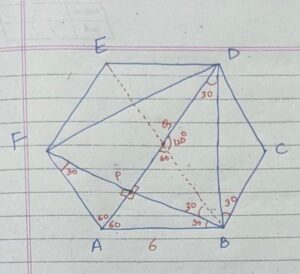Q. A regular hexagon ABCDEF has a side length of 6 cm. BF and BE are diagonals of the hexagon which intersect the diagonal AD at points P and Q respectively. What is the ratio of the area of triangle BPQ to that of the quadrilateral ABDF ?
A. \(\frac{1}{8}\)
B. \(\frac{1}{6}\)
C. \(\frac{1}{7}\)
D. \(\frac{1}{4}\)


Leave A Comment